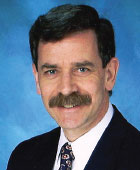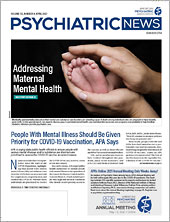Recently, a movement reviving psychedelic drugs has emerged among physicians, echoed by activists like Michael Pollan, who promoted psychedelics for treating a variety of conditions and for “the betterment of well people” in his latest book, How to Change Your Mind: What the New Science of Psychedelics Teaches Us About Consciousness, Dying, Addiction, Depression, and Transcendence. Pollan became a cultural icon for his earlier work, The Omnivore’s Dilemma, in which he exposed a consortium of industry, academia, and government agencies that influence food choice and consequently the health of the American people. Like the food industry, the system behind the marketing of mind-altering substances is obscure. While Pollan celebrated psychedelics, an investigation of substance use industries and their influence on public health might have been more in keeping with socially conscious journalism.
Interest in psychedelics has not gone unnoticed by other stakeholders. The Food and Drug Administration approved “breakthrough therapy” status for 3, 4-methylenedioxymethamphetamine (MDMA) to treat posttraumatic stress disorder and for psilocybin to treat depression (
Psychiatric News), expediting approval for sale by biopharmaceutical companies. The total market for psychedelics could reach billions of dollars, promising a windfall for investors. Grassroots efforts to decriminalize psychedelics are growing in several jurisdictions. Their therapeutic potential has been lauded in news coverage, while clinics offering “psychedelic treatment” are springing up across social media. What could possibly go wrong?
Early enthusiasm for psychedelic treatment was drawn mostly from uncontrolled or underpowered trials. While the emotional significance of psychedelic experiences described by cancer and other patients is worth exploring, some trial participants reported frightening reactions. Serious adverse effects in unsupervised settings are well documented. Intoxication with MDMA has resulted in hyperthermia, rhabdomyolysis, delirium, or psychosis, sometimes progressing to life-threatening complications. Hallucinogens commonly cause nausea, vomiting, headaches, agitation, and tachycardia. Violence or suicide may follow delirium, psychosis, or panic during “bad trips.” Toxicity is compounded by polysubstance use. Estimates of persistent toxicity are controversial. While several studies suggested a risk of features resembling schizophrenia, additional research may determine whether genetic risk predisposes to psychosis. Patients who have preexisting psychotic disorders and are prone to substance use disorder may become worse. The risk of addiction varies and requires further study for some of these agents.
Government efforts to improve scientific standards and protections for subjects in psychedelic research have been viewed as overly restrictive and politically motivated; however, misuse of psychedelics may pose a threat to public health. Investigations of unsupervised use have been limited but could inform policy to prevent a recurrence of Wild-West practices and abuse in the future. In fact, illicit manufacture, distribution, and use continue to outpace evidence-based research. For example, MDMA remains a popular club drug with lifetime use reported by 5% to 10% of the population, especially among adolescents and young adults. The enormous marketing potential is highlighted by one clandestine laboratory that was found to be distributing 500,000 doses of MDMA a month prior to government restrictions in 1985.
Database surveys have shown that most psychedelics cause relatively less harm to users and society compared with alcohol, tobacco, opioids, and stimulants. However, greater harm may accrue to agents that are easily obtainable and affordable due to approved commercial and socially acceptable use. It may be misleading to apply existing data in predicting harms of psychedelics once approval leads to aggressive marketing to vulnerable, disadvantaged groups. For example, government efforts in mitigating damage from drugs with abuse potential reveal troubling system failures. Synthetic opioids proved highly effective for pain control in clinical trials of cancer and other patients, but abuse potential was downplayed by manufacturers. Regulatory agencies failed to halt dispensing by unethical manufacturers, distributors, physicians, and pharmacists. As a result, more than 450,000 Americans died from overdoses in the last 20 years. Rural areas of Appalachia were selectively targeted, where pain from coal-mining injuries adds to isolation, poverty, and despair. The relevance of the opioid crisis is revealed by an advocate for approval of MDMA, who explained, “This is for the red states; this is for people facing ‘despair deaths.’ This is for the mainstream.”
Randomized, controlled trials, which may show effects of psychedelics in controlled settings, are limited in predicting public health risks. Approval of psychedelics, even with restrictive labeling and risk-mitigation strategies, should be conditioned on input from diverse at-risk constituencies and safeguards to interdict unethical manufacturing, distribution, and prescribing. Public-service educational programs to counter promotional advertising must accompany the rollout of any psychedelic products. Diversion of psychedelics may increase following official endorsement, posing a danger to children, adolescents, people with preexisting conditions, and those facing health care inequities or socioeconomic trauma.
The right to prescribe or receive psychedelics may be undermined by escalating misuse once the market is driven by commercial interests. Health care resources could better be used by expanding equal access to primary care and psychiatric treatment, including treatment for substance use disorders, and by providing jobs, housing, education, and social services to disadvantaged and rural communities. There is still time to prevent another national tragedy. ■
References
1.
Reiff CM, Richman EE, Nemeroff CB, et al. Psychedelics and Psychedelic-Assisted Psychotherapy. Am J Psychiatry. 2020;177(5):391-410.
2.
Pollan M. How to Change Your Mind: What the New Science of Psychedelics Teaches Us About Consciousness, Dying, Addiction, Depression, and Transcendence. New York, NY: Penguin Press; 2018.
3.
Garcia-Romeu A, Kersgaard B, Addy PH. Clinical Applications of Hallucinogens: A Review. Exp Clin Psychopharmacol. 2016;24(4):229-268.
4.
Pollan M. The Omnivore’s Dilemma: A Natural History of Four Meals. New York, NY: Penguin Books; 2016.
5.
Cohen S. A Classification of LSD Complications. Psychosomatics. 1966;7(3):182-186.
6.
Hegadoren KM, Baker GB, Bourin M. 3,4-Methylenedioxy Analogues of Amphetamine: Defining the Risks to Humans. Neurosci Biobehav Rev. 1999;23(4):539-553.
7.
Armenian P, Mamantov TM, Tsutaoka BT, et al. Multiple MDMA (Ecstasy) Overdoses at a Rave Event: A Case Series. J Intensive Care Med. 2013;28(4):252-258.
8.
Leonard JB, Anderson B, Klein-Schwartz W. Does Getting High Hurt? Characterization of Cases of LSD and Psilocybin-Containing Mushroom Exposures to National Poison Centers Between 2000 and 2016. J Psychopharmacol. 2018;32(12):1286-1294.
9.
Cohen S, Ditman KS. Complications Associated With Lysergic Acid Diethylamide (LSD-25). JAMA. 1962;181:161-162.
10.
Campbell EC, Caroff SN, Mann SC. Co-occurring Schizophrenia and Substance Use Disorder: Epidemiology, Pathogenesis, Clinical Manifestations, Course, Assessment, and Diagnosis. 2020.
11.
Johnson MW, Griffiths RR, Hendricks PS, Henningfield JE. The Abuse Potential of Medical Psilocybin According to the 8 Factors of the Controlled Substances Act. Neuropharmacology. 2018;142:143-166.
12.
Bonson KR. Regulation of Human Research With LSD in the United States (1949-1987). Psychopharmacology. 2018;235(2):591-604.
13.
Palamar JJ, Keyes K, Cleland CM. Underreporting of ecstasy Use Among High School Seniors in the US. Drug Alcohol Depend. 2016;165:279-282.
14.
Eyre E. Death in Mud Lick: A Coal Country Fight Against the Drug Companies That Delivered the Opioid Epidemic. New York, NY: Scribner 2020.
15.
Schwartz C. Attention: A Love Story. New York, NY: Pantheon Books; 2020.

